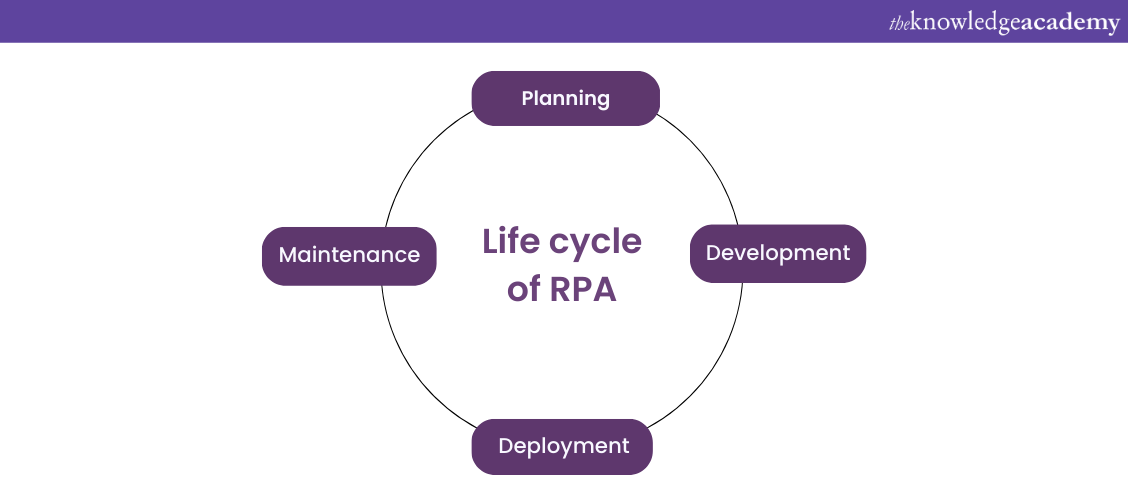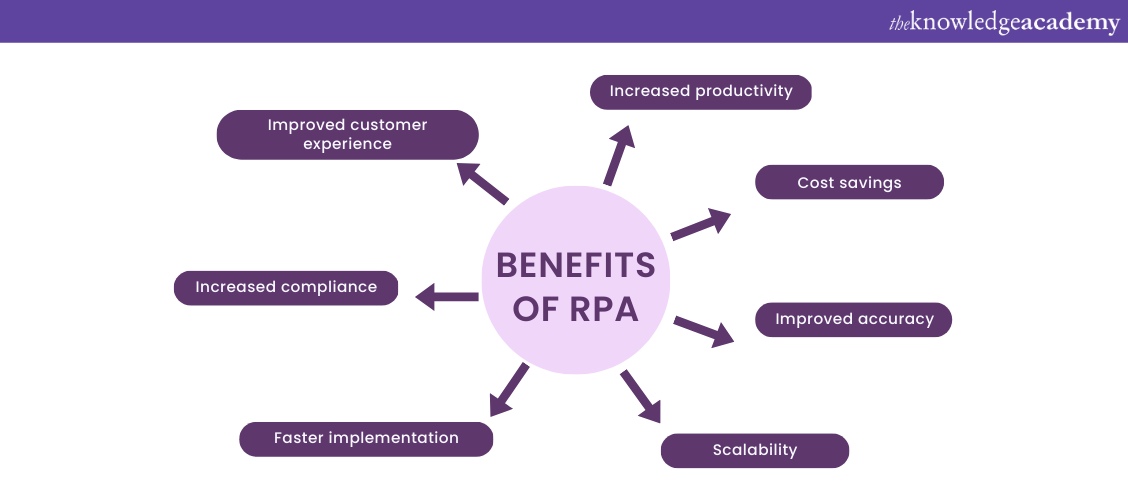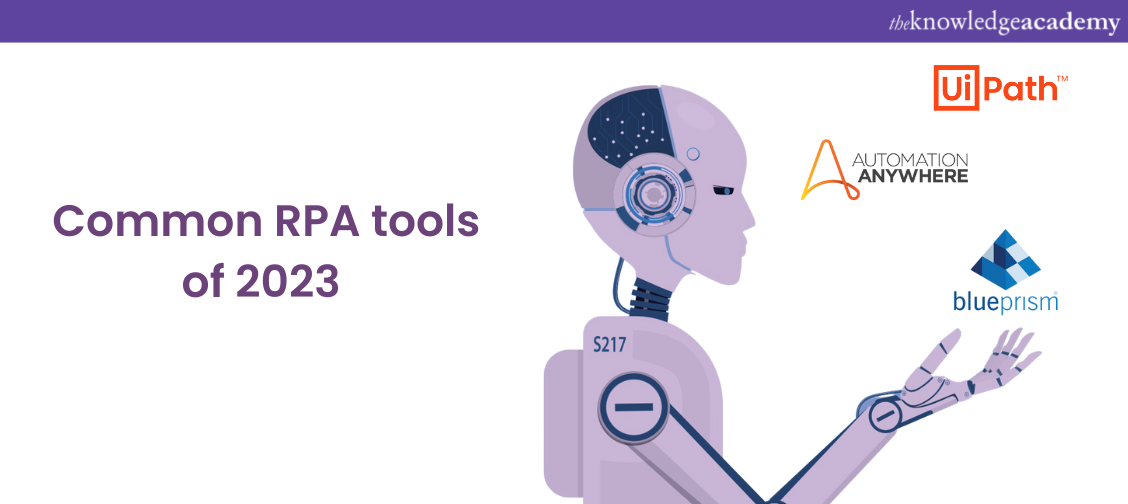We may not have the course you’re looking for. If you enquire or give us a call on 01344203999 and speak to our training experts, we may still be able to help with your training requirements.
Training Outcomes Within Your Budget!
We ensure quality, budget-alignment, and timely delivery by our expert instructors.

No one wants to do a monotonous and dreary job if a replacement is possible. If you feel the same way, Robotic Process Automation (RPA) might be the capable substitute you are looking for. RPA for Beginners does not require prior programming knowledge, and organisations find it easy to transition it into their business process.
RPA is a feature of Intelligent Process Automation (IPA) that describes logically driven bots to execute pre-programmed rules on structured data. According to a study by Deloitte, over 50% of organisations confirmed that their overall productivity is optimised to a higher level by employing RPA.
Towards the end of this blog, you will learn about Robotic Process Automation (RPA) for Beginners, along with the benefits, tools and use cases. Read ahead!
Table of Contents
1) RPA tutorial for beginners
2) The life cycle of RPA
3) Benefits of RPA
4) Why should you learn RPA?
5) Distinction between RPA and other automation tools
6) RPA tools
7) Use cases of RPA
8) Conclusion
RPA tutorial for beginners
RPA refers to using software robots or bots to automate repetitive, rule-based and mundane tasks typically performed otherwise by humans. RPA technology is designed to mimic human actions by following predefined rules and interacting with digital systems. It performs tasks like data entry, information processing and workflow management.
RPA bots can be programmed to work with various software systems, including Enterprise Resource Planning (ERP) software, Customer Relationship Management (CRM) software and other types of business applications. This makes it appealing due to its compatibility and scalability. RPA can also be integrated with Machine Learning (ML) and Artificial Intelligence (AI) to create more intelligent bots that can learn from their experiences and help make more informed decisions in the future.
The life cycle of RPA

The RPA life cycle consists of four primary stages. They are:
1) Planning: It is the first stage in the life cycle of RPA. During this stage, the organisation defines its objectives, identifies the processes that can be automated, and evaluates the financial feasibility of the project. The planning stage is important to ensure that the RPA implementation aligns with the organisation's business goals.
2) Development: The development stage is where the RPA solution is built. During this stage, the organisation designs and develops the RPA bots, test them and creates the necessary documentation. This stage is crucial to ensure the automation workflows meet the organisation's requirements.
3) Deployment: After successful development and testing, the RPA bot is ready to be deployed/implemented. During this stage, the organisation deploys the RPA bot in the business environment, tests them, and performs User Acceptance Testing (UAT). The deployment stage is vital to ensure the developed bots are ready for their intended purpose.
4) Maintenance: The deployed RPA bots are maintained and supported in the maintenance stage. During this stage, the organisation monitors the automation work of the bots, fixes any issues that arise, and provides general user support. The maintenance stage is important to ensure that the automation workflows continue to work as expected and deliver the desired business outcomes.
The RPA life cycle is an iterative process, and the organisation may need to revisit previous stages as it learns and adapts to the automation workflows.
Eager to learn more about Robotic Process Automation, refer to our blog on "RPA testing"
Benefits of RPA

RPA is beneficial for organisations in several ways, including:
1) Increased productivity: RPA can perform tasks faster and more accurately than humans, increasing productivity and efficiency.
2) Cost savings: By automating repetitive tasks, RPA can reduce unnecessary labour costs and save resources for more strategic initiatives.
3) Improved accuracy: RPA is less prone to errors than humans, which can improve the accuracy and overall quality of work.
4) Scalability: RPA can be easily scaled up or down depending on business needs, making it an ideal solution for organisations of all sizes.
5) Faster implementation: RPA can be implemented quickly and with minimal disruption to existing systems, allowing organisations to realise the benefits of automation sooner.
6) Increased compliance: By automating processes and providing an audit trail of activities, RPA can help ensure compliance with regulatory requirements.
7) Improved customer experience: RPA can help improve the speed and accuracy of customer interactions by automating processes, leading to a better overall experience. Example: Using Chatbots.
Deploy RPA to your business smoothly and efficiently through the OpenSpan RPA Training. Sign up now!
Why should you learn RPA?
As discussed above, RPA bots can be used to automate routine tasks, which can significantly improve operational efficiency, reduce errors and free up time for employees to focus on work that is more valuable to the organisation. Here are some reasons that show how beneficial RPA is for Beginners:
1) High Demand: There is a high demand for RPA skills in the job market, which is expected to grow in the coming years. The constant rise in CAGR for RPA jobs on the job market presents an exciting opportunity for beginners. There are online and offline learning sources that offer an excellent opportunity for RPA Beginners.
2) No programming experience required: RPA technology is relatively easy to learn and does not require extensive programming knowledge. Most RPA tools use drag-and-drop interfaces, making it easy for beginners to create bots without writing code.
3) Easy to learn: RPA tools are designed to be intuitive and easy to learn. Beginners can start with simple tasks and gradually build their skills to automate more complex tasks.
Distinction between RPA and other automation tools
Compared to other automation platforms/tools, RPA has three noteworthy features:
1) Security: Unlike other AI tools, RPA is deployed on a centralised IT setup and cannot be deployed locally on a machine. This allows for the safety of the program.
2) Non-disruptive: Whenever an automation tool is introduced, there will be major changes in a business process and a significant amount of time and resources will be spent on the process and the employees in the organisation. This, however, does not apply to RPA because it is usually applied for a particular task and not the process itself.
3) Ease of configuration: Configuring an RPA bot within a business process is possible without prior coding knowledge. Other automation tools, however, need an SME with at least basic knowledge of coding skills.
RPA tools
The increase in demand for digital solutions within organisations to make business processes more efficient has seen an increase in demand for RPA tools. Organisations use RPA tools to automate tasks for a defined workflow.
A List of RPA tools

With the focus on automating repetitive tasks using RPA increasing daily, RPA tools have gradually increased. RPA solutions may fit into one of three categories- basic process automation, enhanced process automation, and automatic/cognitive automation. There are many RPA tools available in the market, but the three most commonly used ones are:
1) UiPath: UiPath is a popular RPA tool that offers a drag-and-drop interface for building automation workflows. It uses Artificial Intelligence (AI) and Machine Learning (ML) algorithms to automate repetitive tasks such as data entry, form filling, and report generation. UiPath also offers a community edition for developers to learn and experiment with the platform.
2) Automation Anywhere: Automation Anywhere is another widely used RPA tool for Beginners that provides a user-friendly interface for creating bots and automation workflows. It uses a combination of advanced analytics, cognitive automation, and Machine Learning algorithms to automate tasks such as data extraction, invoice processing and customer support.
3) Blue Prism: Blue Prism is an enterprise-grade RPA tool that offers a centralised management console for deploying and managing bots and automation workflows. It provides a drag-and-drop interface for creating workflows and supports multiple programming languages. Blue Prism also offers a Digital Exchange, a marketplace for pre-built automation components that can be easily integrated into the workflows.
Criteria to select the right RPA tool
Choosing the right RPA tool can be daunting, as several factors must be considered. Here are some criteria to help you select the right RPA tools:
1) Functionality: The RPA tool you choose should meet your business requirements and perform the tasks you desire to automate. It should be able to integrate with other applications, provide reporting capabilities and be scalable.
2) Ease of use: The RPA tool should have an intuitive interface and be easy to use. It should allow business users with no programming experience to design, deploy and manage automation tasks without requiring assistance from the IT department.
3) Flexibility: The RPA tool should be flexible enough to adapt to your changing business needs. It should be able to automate processes across different systems and platforms, handle exceptions and allow for customisation.
4) Security: The RPA tool should have strong security features to protect your data and processes. It should support secure authentication and authorisation, encryption and access controls.
5) Cost: The cost of the RPA tool should be reasonable and within your budget. It should provide a good ROI by reducing costs and increasing productivity.
6) Support: The RPA tool should have a reliable support system to address any issues or problems quickly. It should provide adequate documentation, training and customer support.
7) Scalability: The RPA tool should be able to handle large volumes of data and processes as your business grows. It should support multiple robots and be easily integrated into your existing infrastructure.
Use cases of RPA
Some of the popular use cases of RPA for Beginners are:
1) Data entry: RPA can be used to automate data entry tasks involving data transfer from one system to another, such as entering customer information into a CRM system or updating financial records.
2) Customer service: RPA can be used to automate customer service tasks such as answering frequently asked questions or responding to inquiries via chatbots.
3) Accounting and finance: RPA can be used to automate accounting and finance tasks such as invoice processing, accounts payable and receivable, and financial reporting.
4) Human resources: RPA can be used to automate HR tasks such as employee onboarding, payroll processing and benefits administration.
5) Healthcare: RPA can be used to automate healthcare processes and tasks such as patient registration, claims processing and medical billing.
6) Manufacturing: RPA can be used to automate manufacturing tasks such as quality control, inventory management, and production scheduling.
7) Supply Chain Management: RPA can be used to automate Supply Chain tasks such as order processing, order management, inventory management, and shipping and receiving.
8) Banking and finance: RPA can be used to automate banking and financial service tasks such as loan processing, fraud detection and compliance monitoring.
Conclusion
Overall, RPA technology is an emerging trend transforming how businesses operate and is expected to become more prevalent in the future. With RPA in the game, human energy can now be directed towards causes that can help an organisation in the long term.
Hopefully, the above-discussed RPA for Beginners Tutorial gives you a basic idea about Robotic Process Automation and helps you kickstart your RPA journey. If you are an RPA beginner, there is no better time to start learning than now.
Become a Microsoft RPA developer by signing up for our Microsoft Power Automate RPA Developer PL500 course!
Frequently Asked Questions
Upcoming Business Analysis Resources Batches & Dates
Date
 Robotic Process Automation using UiPath
Robotic Process Automation using UiPath
Thu 12th Dec 2024
Thu 13th Feb 2025
Thu 10th Apr 2025
Thu 12th Jun 2025
Thu 14th Aug 2025
Thu 9th Oct 2025
Thu 11th Dec 2025







 Top Rated Course
Top Rated Course



 If you wish to make any changes to your course, please
If you wish to make any changes to your course, please


